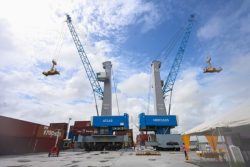NEW YORK, (Reuters) – Wall Street is on track to achieve its first annual advance in two years after staging a strong comeback from the March lows. But viewed in the context of the last decade, investors have little to cheer about.
The benchmark Standard & Poor’s 500 is down about 10 percent over the last 10 years, which puts Wall Street on course to register its first-ever negative decade on a total return basis, even with dividends reinvested.
“It’s the pits,” said Howard Silverblatt, senior index analyst at Standard & Poor’s in New York. “The bottom line is that this decade is not good for investors. It was a lost decade to some degree.”
Even the Great Depression in the 1930s, which followed the stock market crash in October 1929 and spanned one of the worst periods for stock investing, turned out positive as dividends helped investors cushion some of the turbulence.
The overriding catalyst for poor returns are the two bear markets that bookended the decade. The first came after the technology bubble collapsed in March 2000, just as the decade got under way. The pain was only compounded by the recession of 2001, which lasted just eight months. The U.S. economy and the stock market were further wounded by the Sept. 11 attacks.
The going got even tougher as the economy slid into an even worse recession in December 2007, barely two months after the Dow and the S&P 500 set lifetime closing highs.
Excluding dividends, the S&P 500 Index shows a drop of almost 25 percent this decade, compared with a gain of more than 300 percent over the 1990s, he added.








